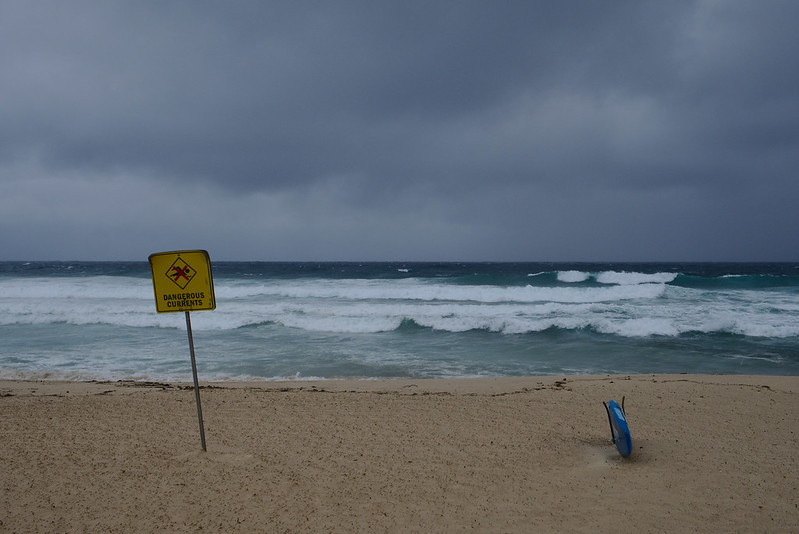
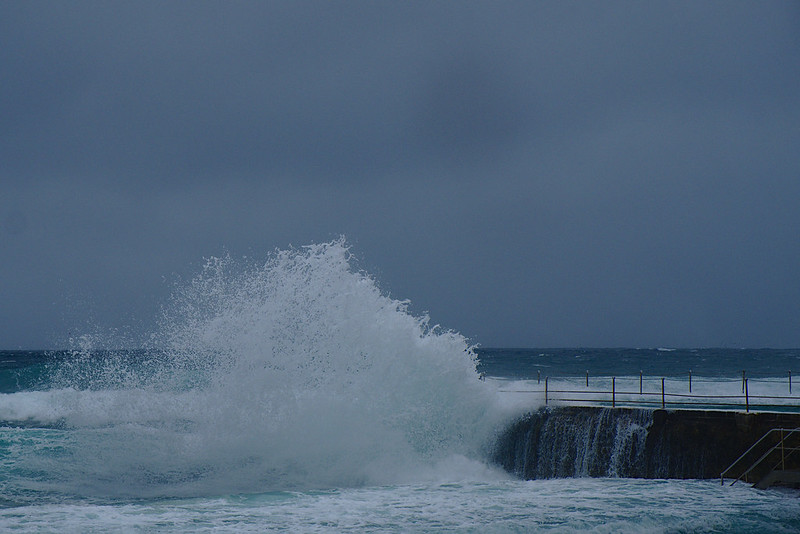
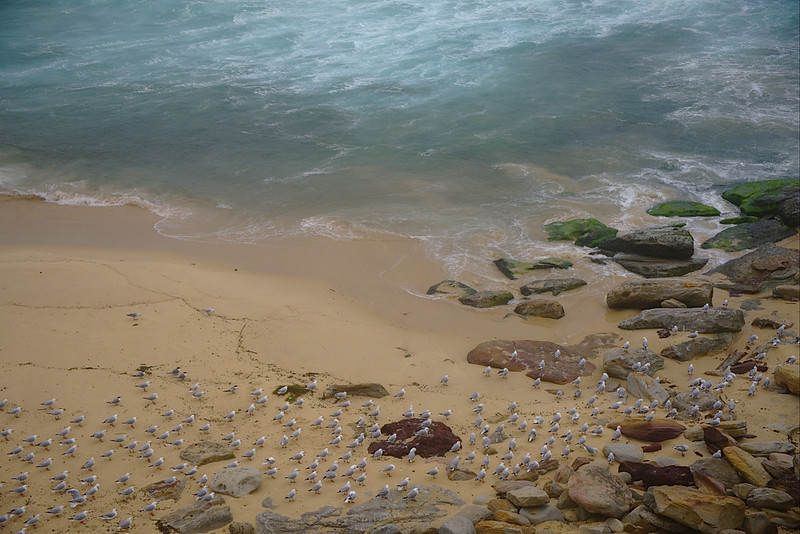
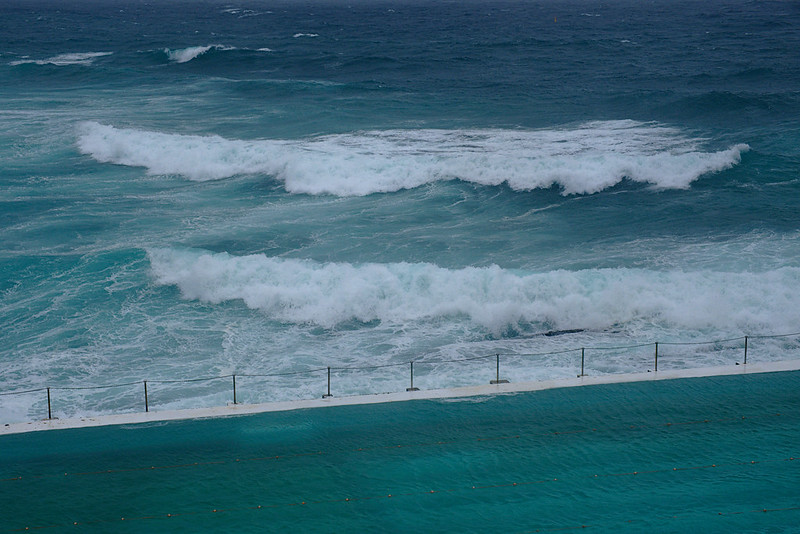
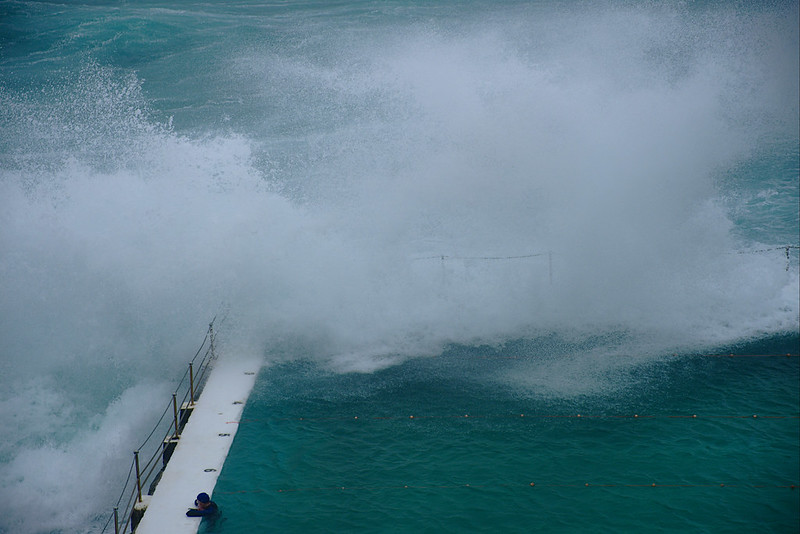
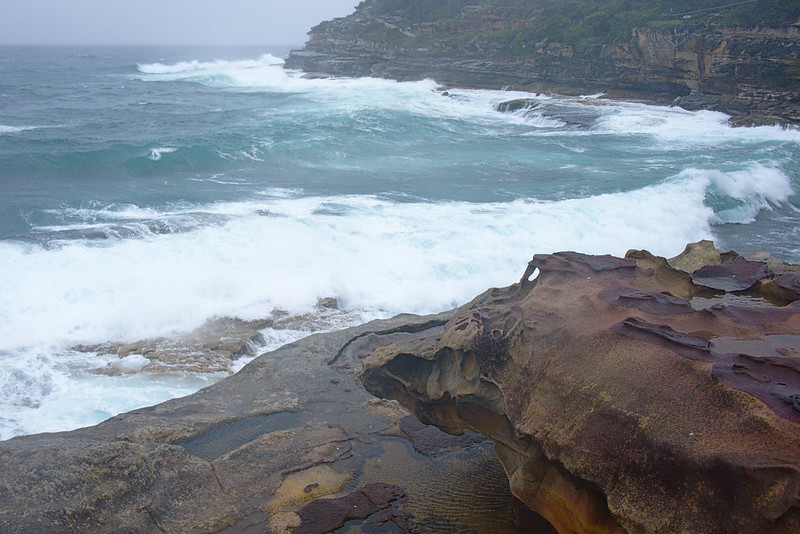
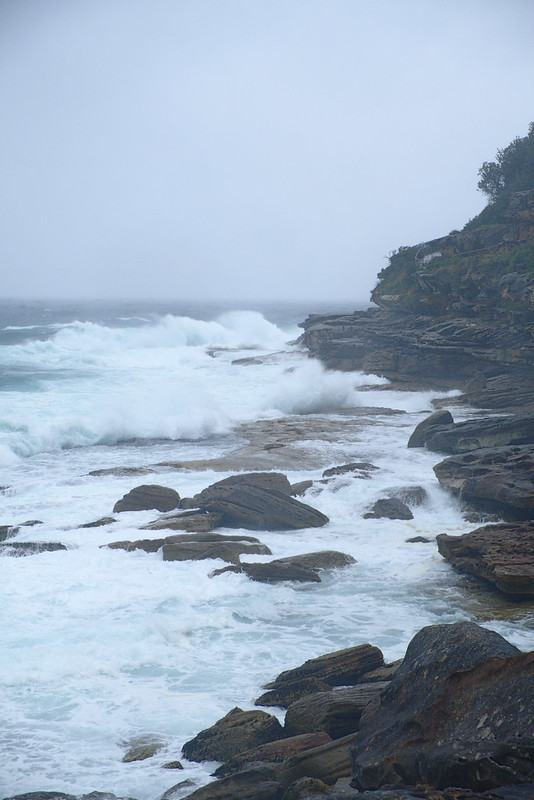

by Mary
Before the summer of 2017/2018 choked us all in endless dreary sunlight and humidity, there was a grey day with high surf…
I switched camera systems in May this year to a mirrorless system, specifically a Fuji XT-20 body with various lenses. Its first big expedition was to New York but soon enough it was time for the much closer to home annual trek around the autumn foliage. The camera body failed around mid-day (had to go in for repairs as it was unable to detect lenses connected to it), very poor timing since Andrew’s niece was born that day, but we had some adventures first.
I remain fascinated by the ludicrous, alien, ornamental pear that is planted in such profusion around here:
But eucalypts can hold their own:
Last year, inner west autumn in the rain:
This year, in the wake of one of the heaviest couple of days of rainfall I’ve ever experienced, and after such a warm autumn that the leaves in fact turn in winter, inner west autumn in the sun:
Leigh advises if you tell a story three times, blog it. My version is “if you give advice three times…” I tend to assume that Sydney advice is fairly easy to find for visitors, but sometimes it’s better from someone you know! I’ve given advice to three separate first-time travellers to Sydney in two months, and am accordingly freeing it for you, my reading audience.
I’ve lived in Sydney for 17 years this year, my entire adult life. My Sydney biases: I like walking and exploring ourdoors. I like things that can be done during the day and ideally that you can take children to. I like dining out including fine dining. I’ve spent the vast bulk of my time in Sydney living without a car and tend to recommend things accessible via public transport.
There are some things I can’t help you with: I’ve never spent much time in pubs and clubs and in any case I’ve had children for more than six years so my already limited partying knowledge is pretty well atrophied now. I’m also not a serious outdoor sports person: I know you can kayak and ocean swim in Sydney but I can’t tell you where or how better than the Internet can.
Unless you have some reason to stay in some particular part of Sydney, stay near Circular Quay or Wynyard train stations for access to the most public transport. If you’re visiting almost entirely for the beaches, stay in Bondi or Manly.
Walk from Circular Quay past (or into) the Opera House and through the Botanical Gardens. The Opera House has performances in many genres if opera isn’t your thing.
Catch the ferry from Circular Quay to Manly. The ferry trip alone is worth it; it is one of the longer ones and you will see much of the eastern harbour. Manly is a beach suburb; you can swim at a harbour or ocean or sheltered ocean beach, do the Manly to Fairlight penguin walk or go to the aquarium.
Catch the ferry from Circular Quay to Cockatoo Island. Cockatoo Island used to be a island-sized shipyard and is now an island-sized museum of ex-shipyarding. You can ramble through giant sheds and along catwalks and so on. There’s on-island camping and glamping, the only harbour island that allows overnight stays. If an island picnic is more your thing, there are also private ferries from Circular Quay to Shark Island, which is more like a large park.

Visit the Maritime Museum at Darling Harbour. Their permanent exhibits include decommissioned naval vessels and a submarine. Have a look at the current exhibits at the Powerhouse Museum for science and technology possibilities.
Head to the beach. As above, Manly is a good choice, and in the eastern suburbs Bondi is famous and has fairly good transport. It’s also a starting point for the beautiful Bondi to Bronte coastal walk. Coogee is the beach with perhaps the next best transport options. Clovelly is a long inlet and thus very calm. Most beaches, including Bondi, Coogee, and Manly have an ocean bath – a pool filled with seawater – if you’re not up for swimming in the ocean.

The art gallery I like best is the Museum of Contemporary Art right at Circular Quay. The huge mural at the entrance is re-commissioned and painted over once a year or so, so look at the current one whenever you go. The cafe at the top has an excellent view.
I’m not done with ferries yet, you can also catch Circular Quay ferries to Luna Park, a harbourside amusement park, and to Taronga Zoo, Sydney’s best known zoo. The Gunner’s Barracks in the vicinity of the zoo is a great ramble but harder to reach from the south side of the harbour.

Great walks include the Bondi to Bronte walk mentioned above, the Glebe foreshore walk and the Harbour Bridge to Manly walk (or the Spit Bridge to Manly half depending on your walking distance and available time).
The water park Wet n Wild may be more of an acquired taste, but I keep wanting to take visitors there. You don’t need to be an especially strong swimmer but a love of rollercoasters might help.
Seasonal things to look out for include the yearly Sydney Festival and Vivid festivals in summer and winter respectively. Vivid includes large light installations around the harbour and other parts of the city. There’s Sculpture By the Sea exhibits on the Bondi to Bronte walk in spring. The film festival is in June and the comedy festival in April and May.

Fine dining is often in flux, check recent restaurant reviews. The Boathouse at Glebe is the closest to a regular we have; it specialises in seafood. Cafe Sydney is my preferred place with a view.
For cafes and gastro pub-style eating, head to Surry Hills; bills is the best known cafe. Haymarket is the centre of Chinese food, and the other side of George Street has some great Thai places including Chat Thai.
If despite my protestations of ignorance someone insisted I choose the bar, for visitors I’d go with the Opera Bar on the lower level of the approach to the Opera House, or try out Blu Bar at the top of the Shangri-La if everyone was willing to primp for it. If your motivation is cocktails alone, the Different Drummer in Glebe is good.
The Blue Mountains to the west are reachable as a day trip on public transport; head to Katoomba and to the Echo Point lookout.
Jervis Bay to the south is a good weekend away; you’ll likely want to drive. If you want to do some kayaking without having to deal with the boat traffic in Sydney Harbour this and several other places on the coast are good alternatives.
Sydney by Nigel Howe.
Cockatoo Island, Sydney by Chris Marchant, cropped and colour adjusted by Mary Gardiner.
Coogee beach, Sydney pool by Tim Gillin, rotated, cropped and colour adjusted by Mary Gardiner.
Luna Park Sydney by Simon Clancy, cropped and colour adjusted by Mary Gardiner.
Vivid Sydney 2014 by MD111, rotated cropped and colour adjusted by Mary Gardiner, availabe as Creative Commons Attribution-Sharealike. The Museum of Contemporary Art light show in 2014 was inspired by artist Jess Johnson, but artist unknown and copyright presumably all rights reserved.
I recently ran a “photo circle”, consisting of a small group of people sending prints of their own photographs to each other. It was a fun way to prod myself to take non-kid photos.
My four photos were:
I took Sun in the eucalypts in the late afternoon of Easter Sunday, as the sun was sinking behind the eucalypts at Centennial Park’s children’s bike track. I tried to take one with the sun shining through the trees but didn’t get the lens flare right. I like the contrast between the sunlit tree and the dark tree in this one. It feels springlike, for an autumn scene.
The other three are a very different type of weather shot, taken during Sydney’s extreme rainfall of late April and very early May:
This one has the most post-processing by far: it was originally shot in portrait and in colour. I was messing around with either fast or slow shutter speeds while it poured with rain at my house; I have a number of similar photos where spheres of water are suspended in the air. None of them quite work but I will continue to play with photographing rain with a fast shutter speed. In the meantime, the slow shutter speed here works well. I made the image monochrome in order to make the rain stand out more. In the original image the green tree and the rich brown fencing and brick rather detract from showing exactly how rainy it was.
This was shot from Gunners’ Barracks in Mosman (a historical barracks, not an active one) as a sudden rainstorm rolled over Sydney Harbour. The view was good enough, but my lens not wide enough, to see it raining on parts of the harbour and not on other parts. All the obscurity of the city skyline in this shot is due to rain, not fog.
This is the same rainstorm as the above shot; they were taken very close together. It may not be immediately obvious, but the saturation on this shot is close to maximum in order to make the colours of the ferry come up at all. I was the most worried about this shot on the camera, it was very dim. It comes up better in print than on screen, too. The obscurity is again entirely due to the rain, and results in the illusion that there is only one vessel on Sydney Harbour. Even in weather like this, that’s far from true. I felt very lucky to capture this just before the ferry vanished into the rain too.
It stormed every day for a few weeks in December, and I kept missing it: either it didn’t hit my suburb or (on more than one occasion) I was taking a nap. But I finally managed to get some photos: